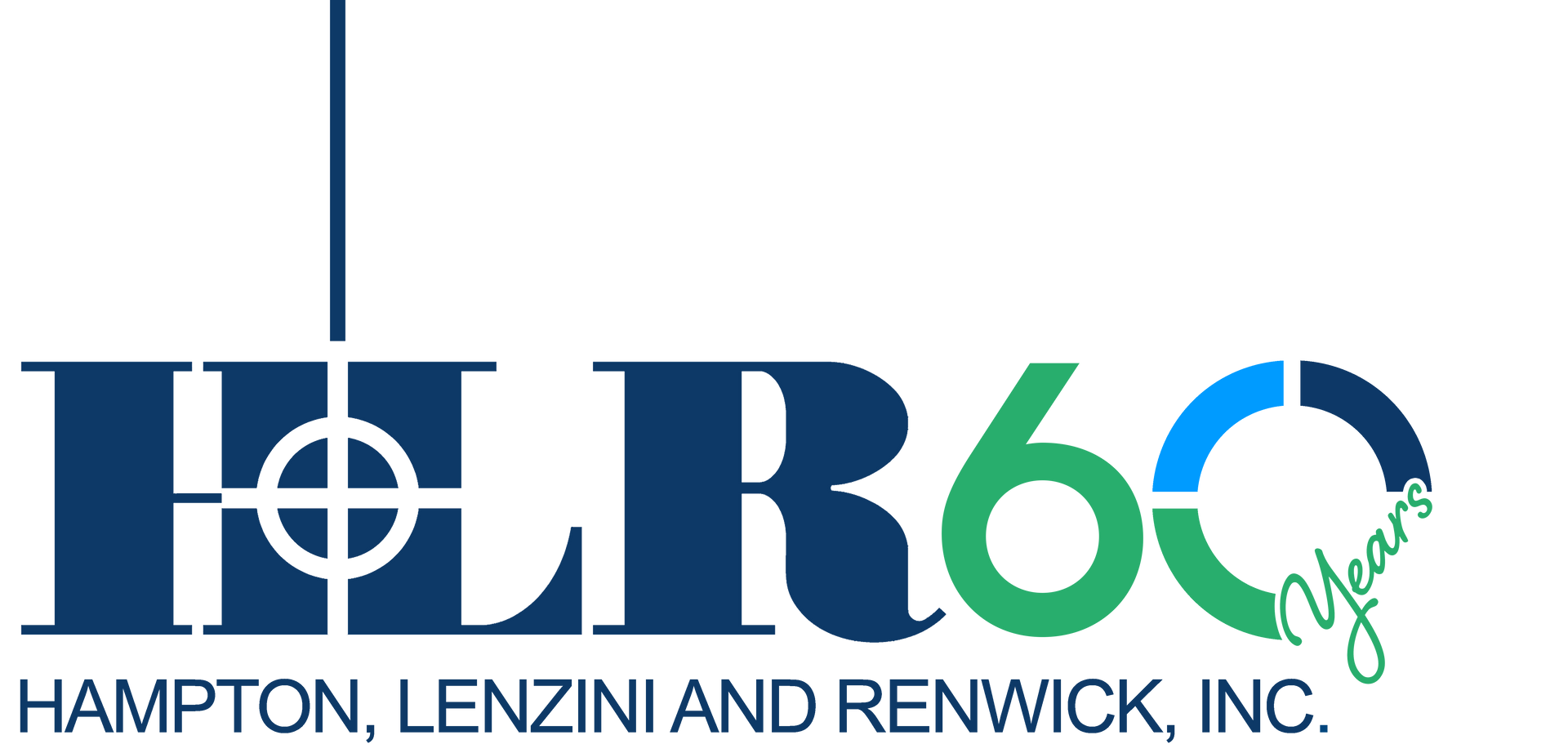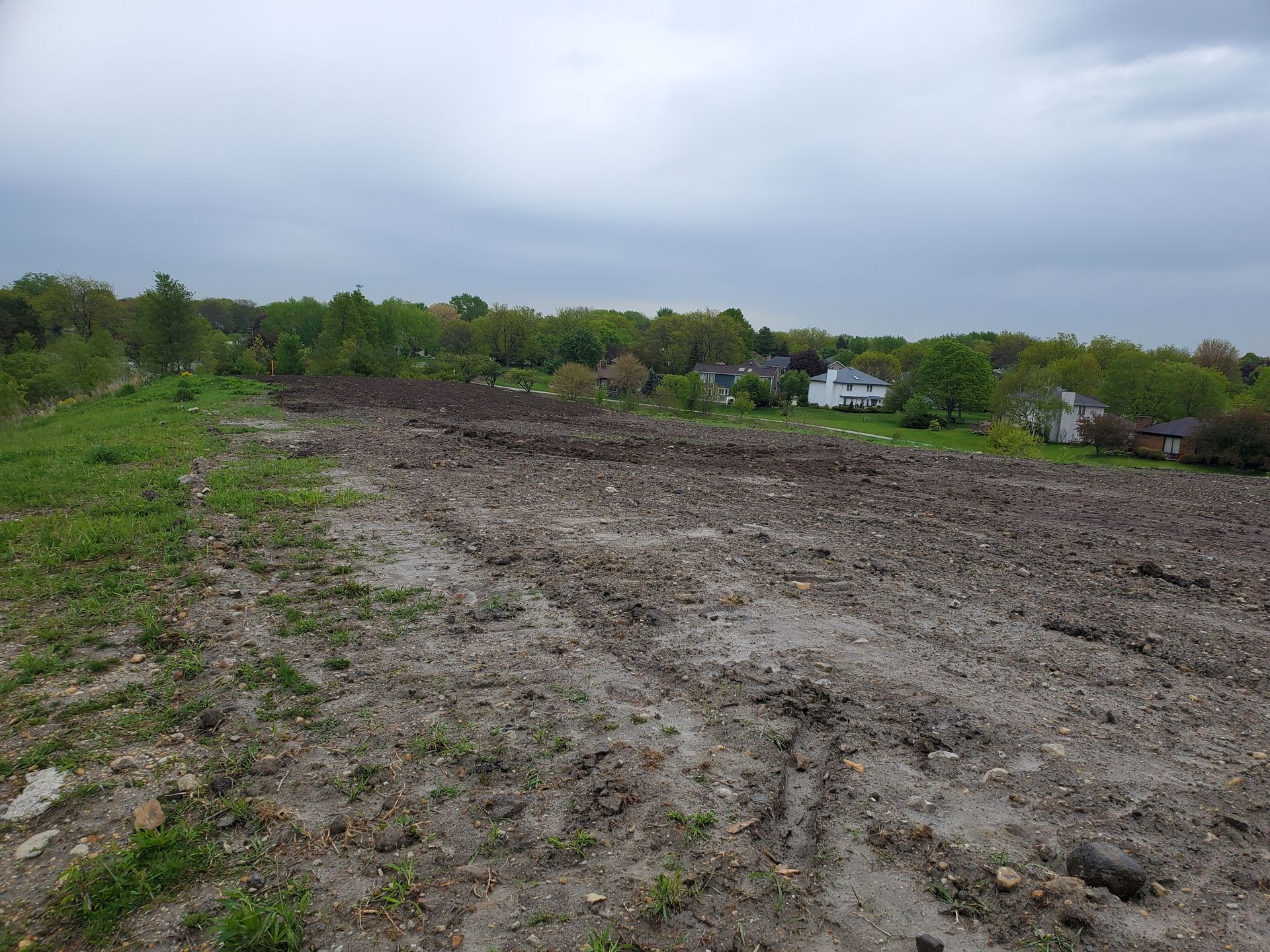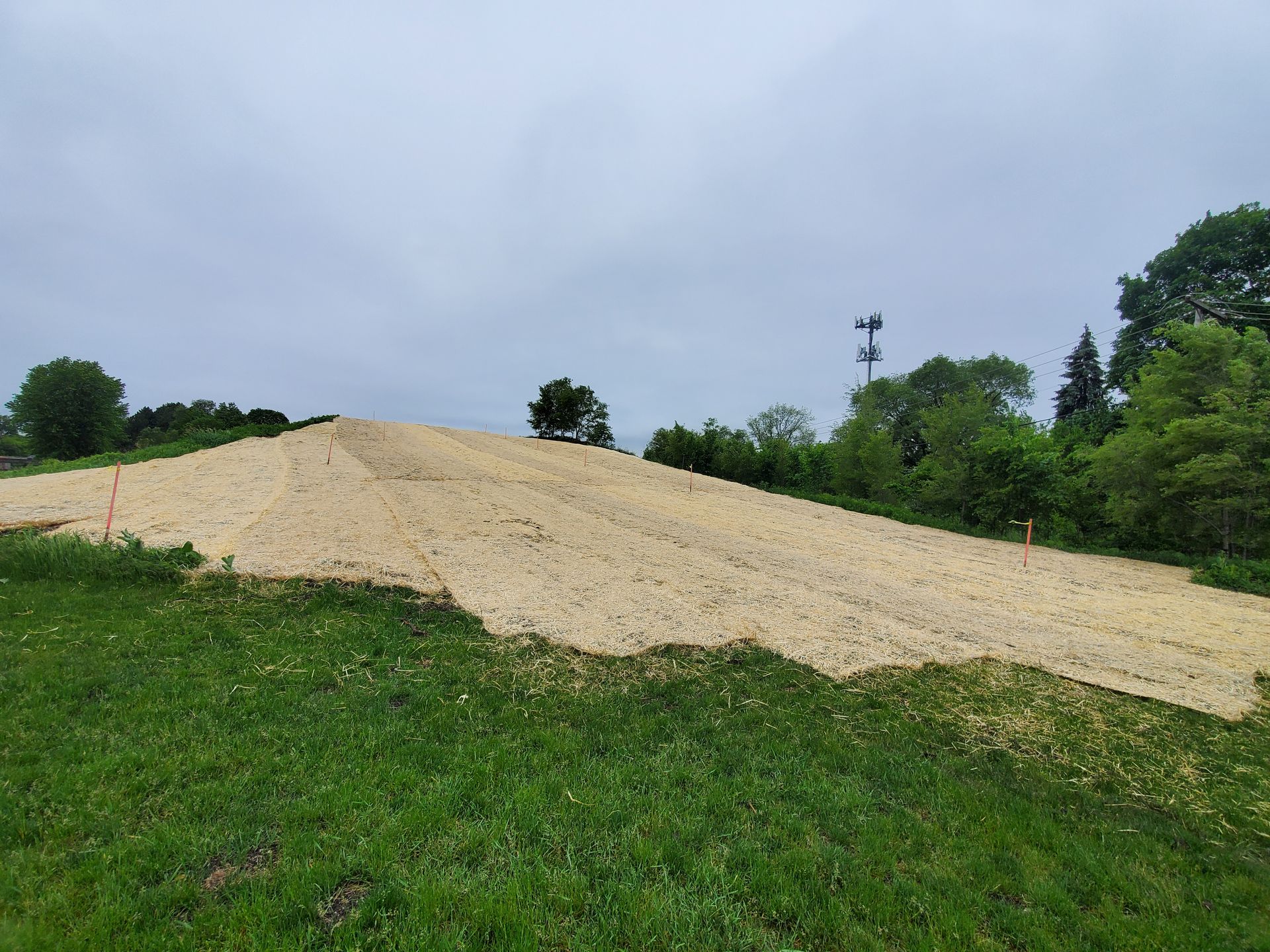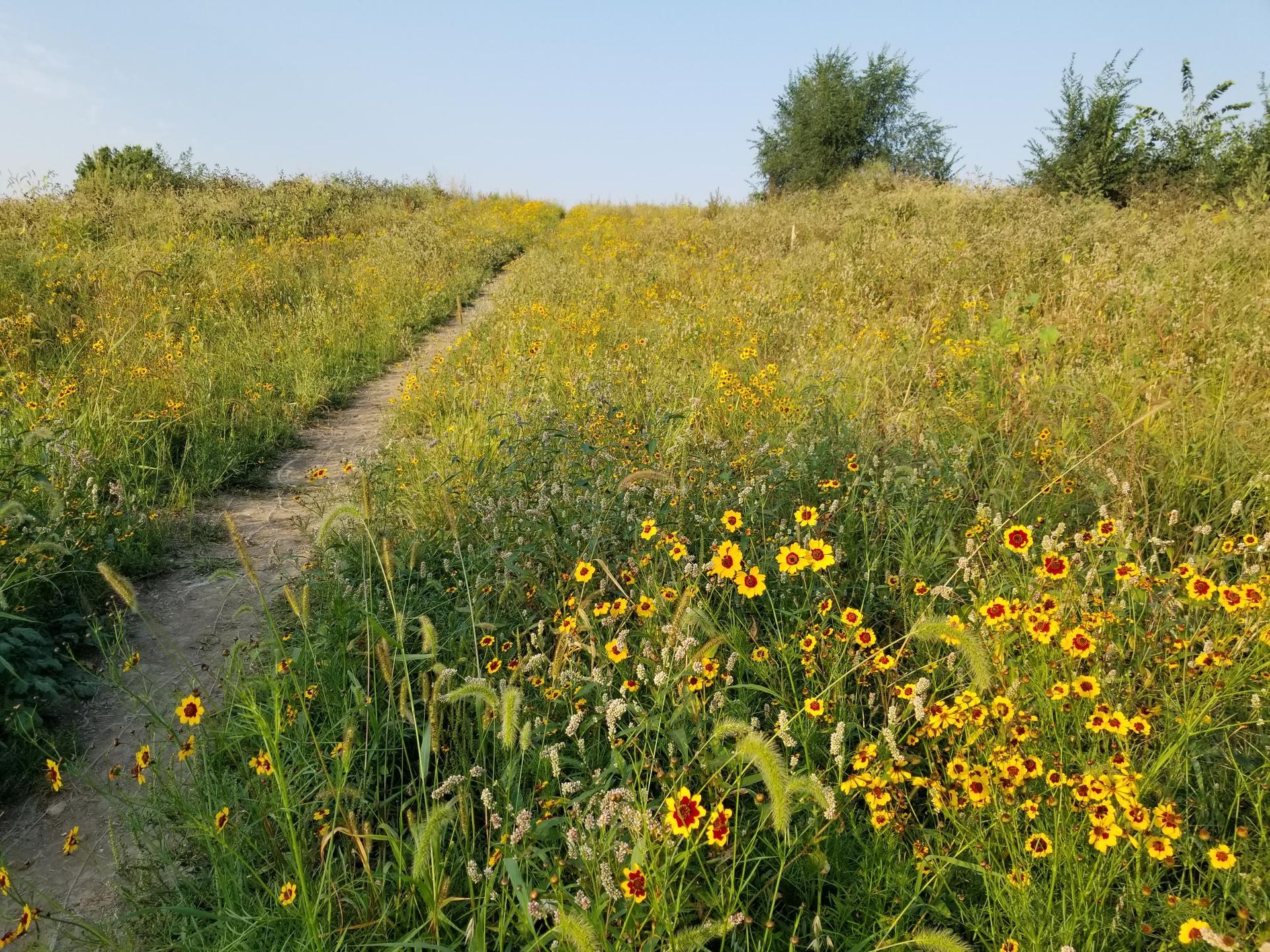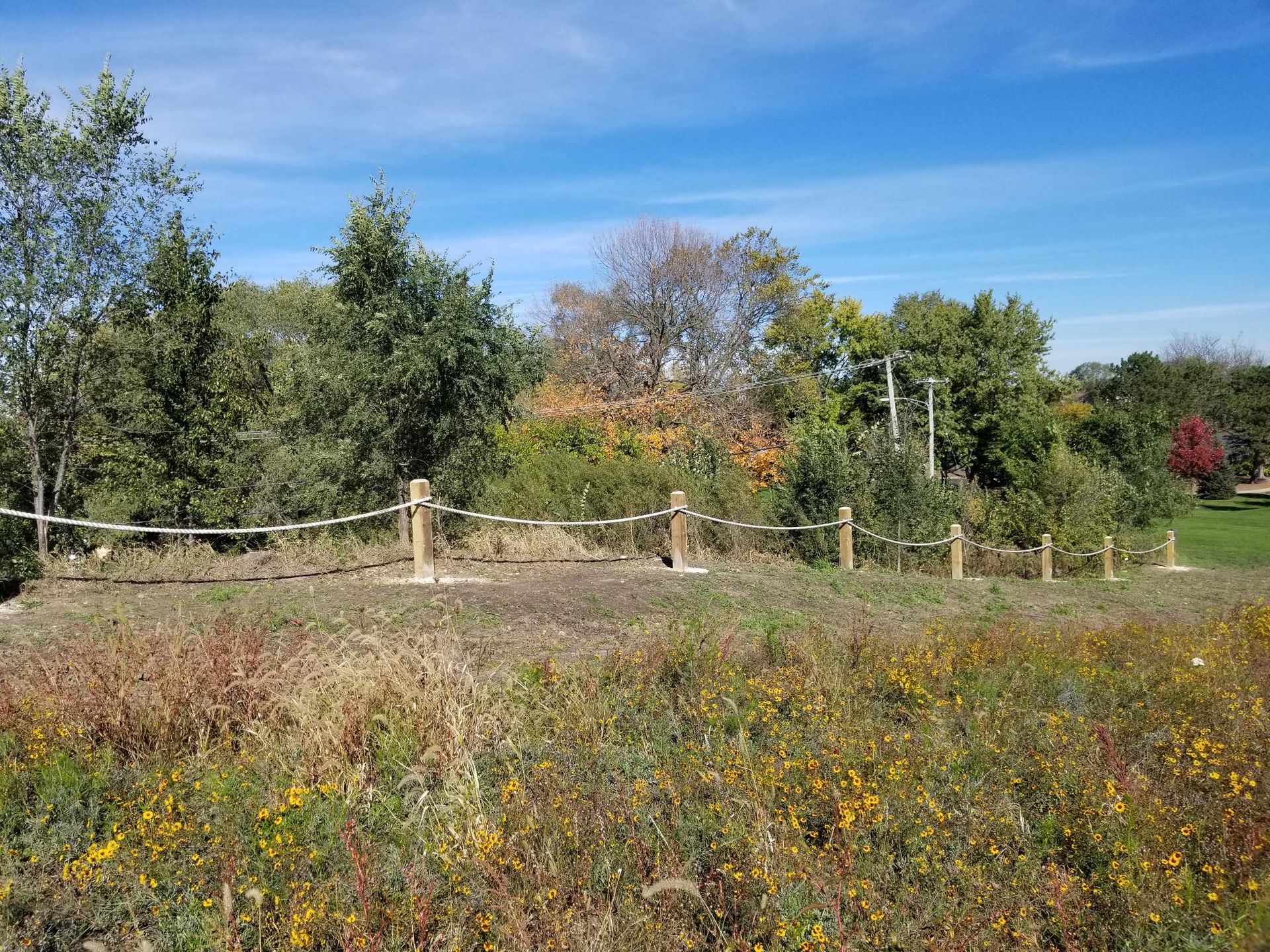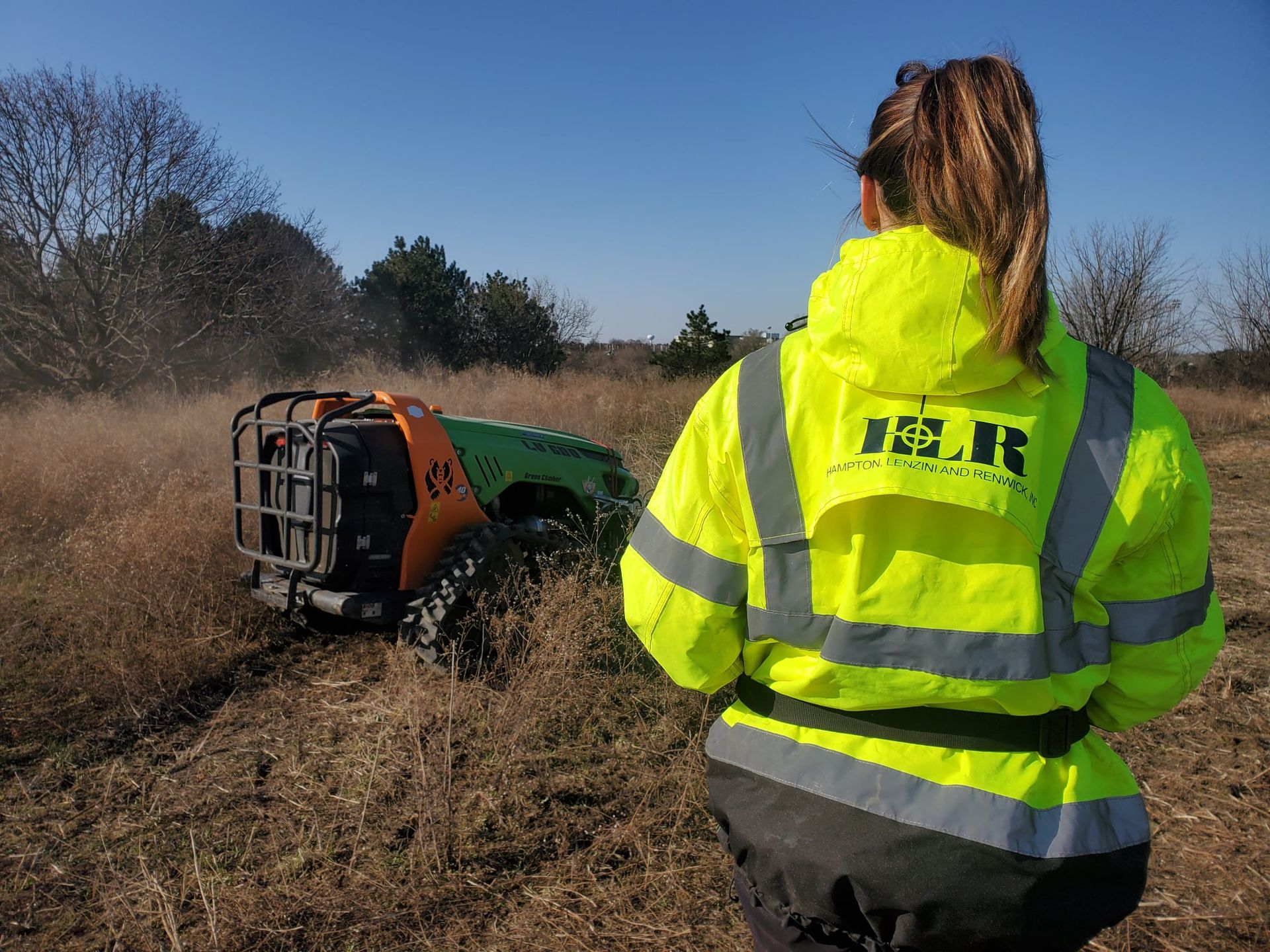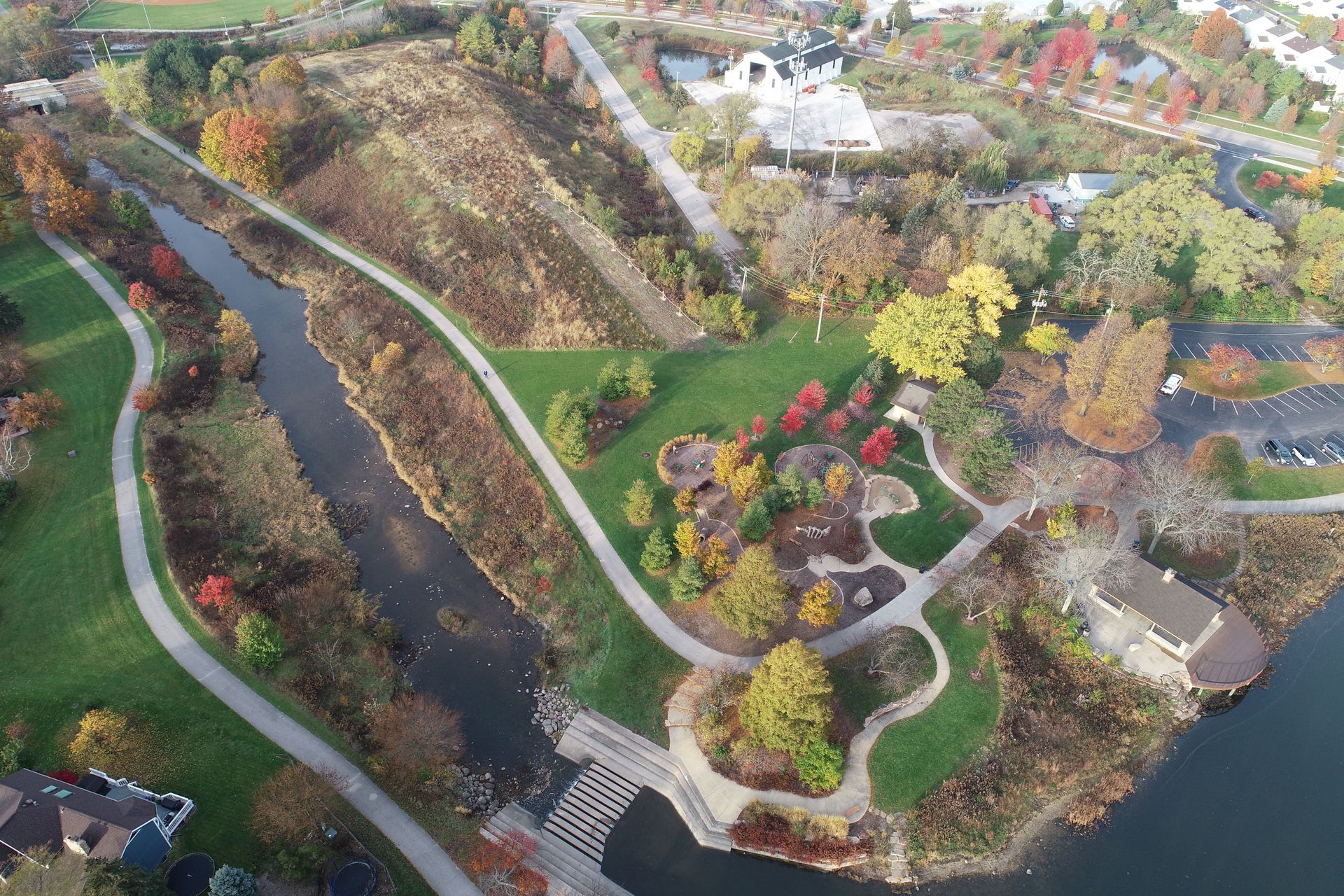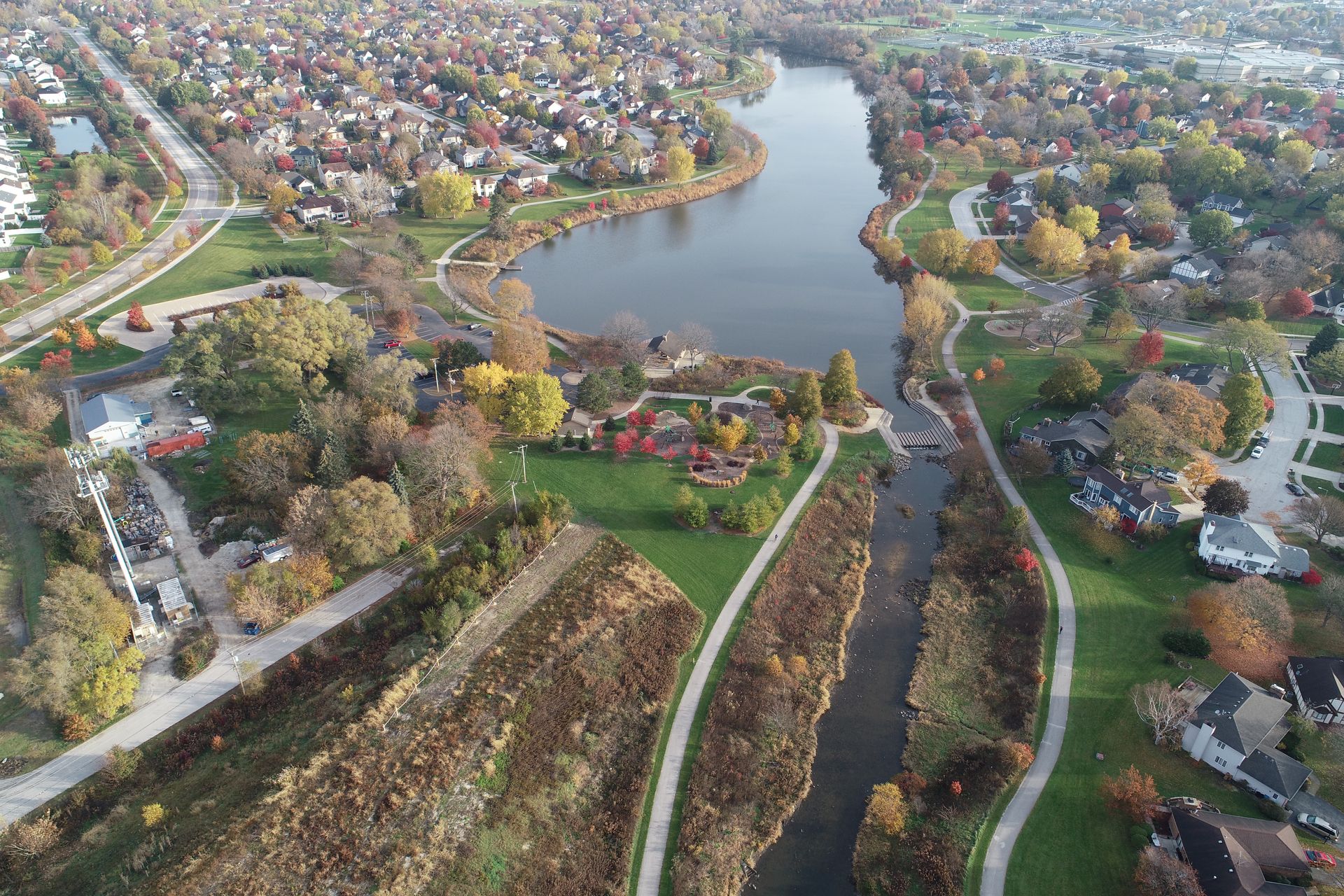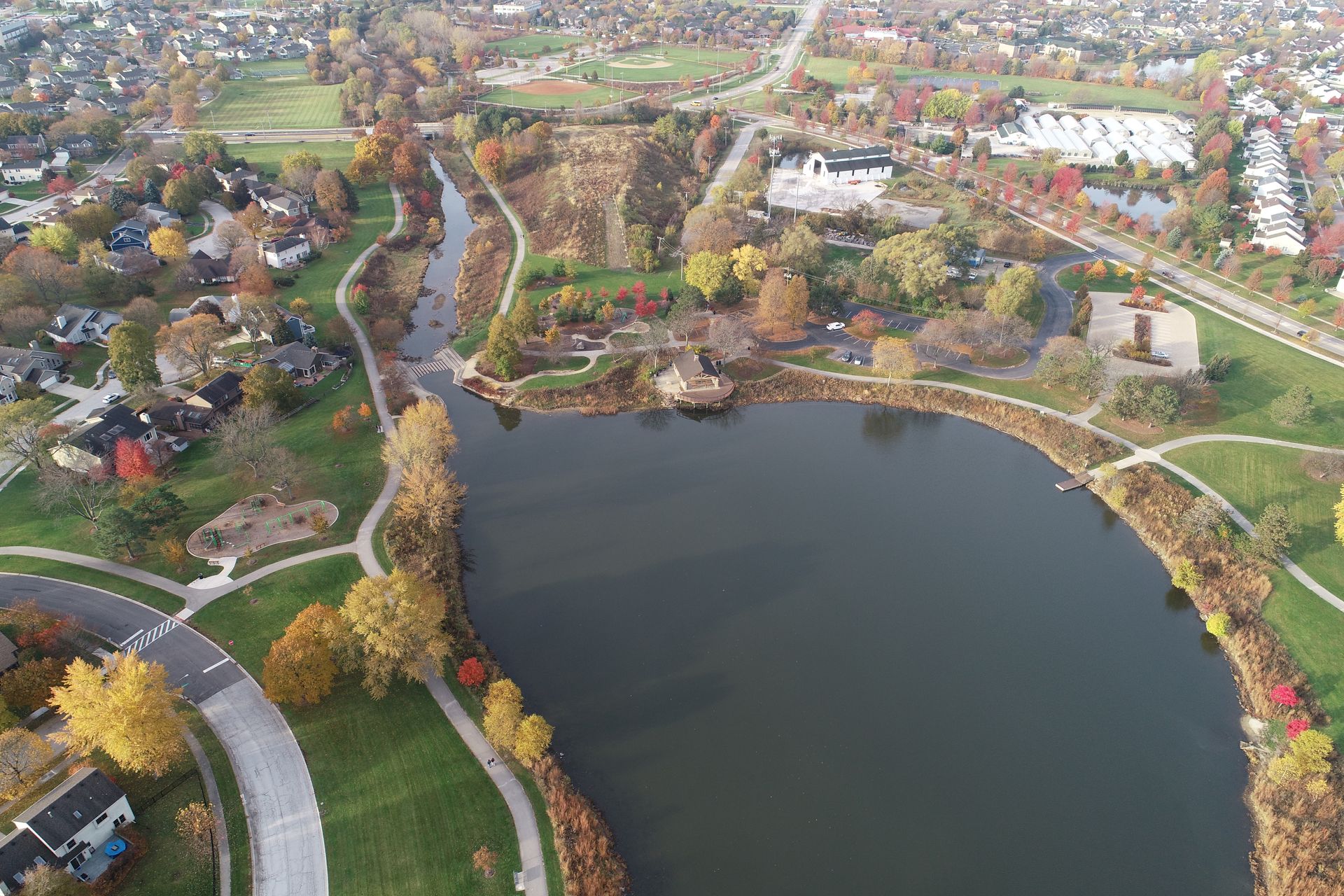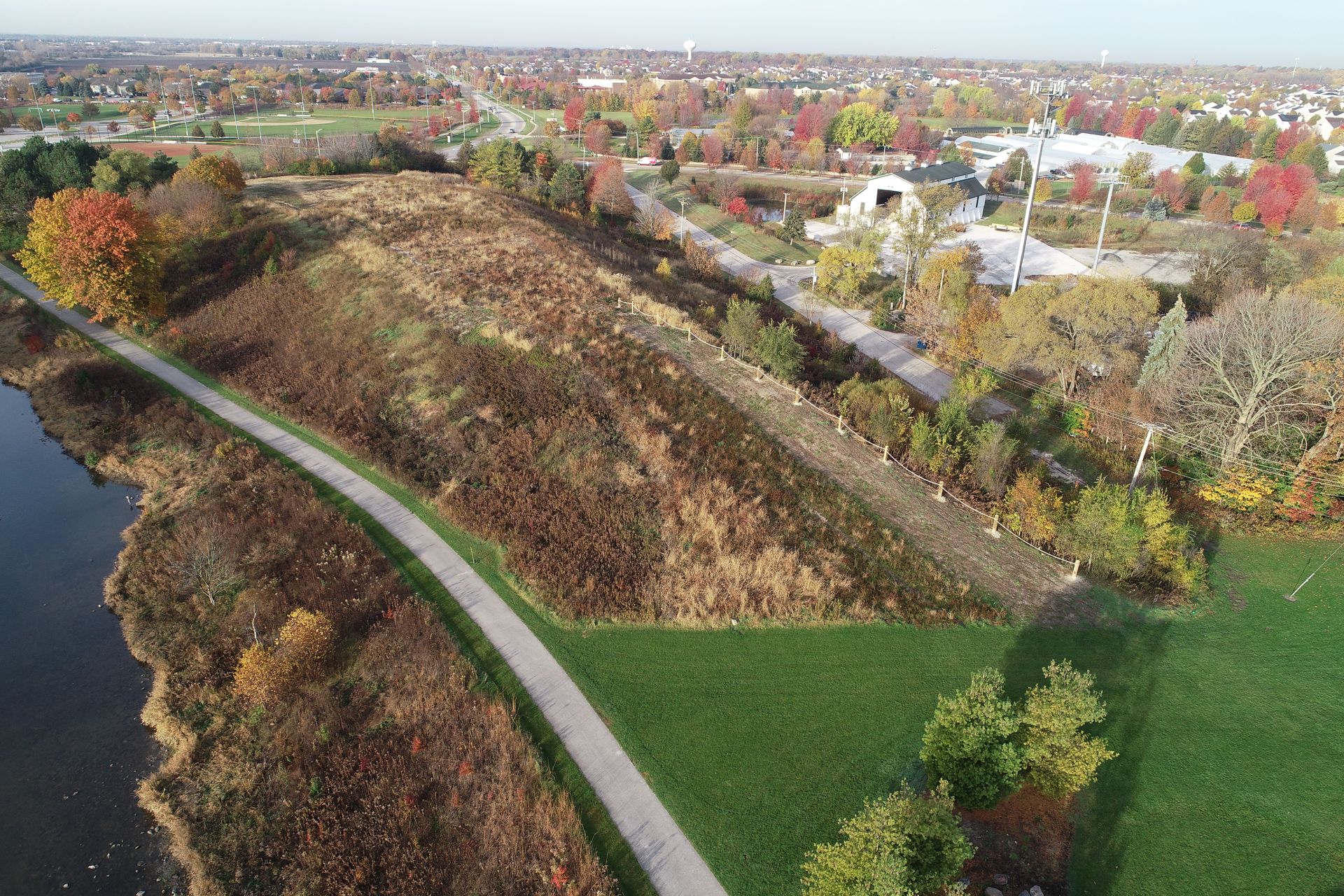Waubonsie Lake Park
Fox Valley Park District
OBJECTIVE
Waubonsie Lake Park, a 70-acre regional destination owned and managed by the Fox Valley Park District, is located near Montgomery Road and Kautz Road in the southeast part of the City of Aurora. Waubonsie Lake Park surrounds Waubonsie Lake, originally a stormwater impoundment intended to reduce flooding throughout Aurora's far east side. In 2012, a study was completed by the Fox Valley Park District to determine that the silt deposits had reached a high enough level to require the City to intervene in accordance with a Park District - City of Aurora intergovernmental agreement. Areas upstream from the lake eroded soil and other debris, depositing the material into the lake via Waubonsie Creek. Decades of accumulation of sediment settled at the bottom of the lake, which would require dredging to remove. The City investigated options to restore the lake and concluded that without significant intervention, the lake would convert back into a wetland reservoir and compromise the lake's recreational benefits.
PROJECT DESCRIPTION
The City obtained all the necessary county, state, and federal permits required to complete the dredging procedure. Multiple floating barges were placed into the lake with the dredging equipment needed to remove and transport the excavated material. Cranes were used to draw up 10,917 cubic yards of material from the bottom of the lake and place it onto other barges where it was dewatered. Once water was drained from the sediment, trucks on the shore began an assembly line to fill up and place the sediment in a stockpile at the southwest corner of the park. Typically, dredging spoils are allowed to dry on-site and are then transported by truck to a clean fill facility. The Fox Valley Park District creatively used the spoils as the foundation for a sled hill. The sled hill project was initiated in winter 2020 and completed in fall 2021.
In the winter of 2020, Hampton, Lenzini and Renwick, Inc. evaluated the current state of the sled hill. After the dredged soil was deposited on the sled hill, it was compacted by trucks repeatedly driving over the area to deposit more loads. The soil was hard and mixed with an abundance of aggregate material. The current vegetative state of the sled hill was comprised of non-native vegetation, including teasel, phragmites, motherwort, and other aster species, creating a heavy invasive seed bank throughout the site. Hampton, Lenzini and Renwick, Inc. developed and initiated a management plan to convert this site to a native prairie.
HLR mowed the top and sides of the hill in late March 2021 to prepare the site for its first year of maintenance. The mow removed built-up vegetation to prepare the site for soil installation. The Fox Valley Park District installed 3 inches of topsoil to increase the height of the slope and accelerate the conversion to a native prairie. HLR then seeded the entire site with a custom native seed mix, which included fast-establishing grasses and forbs. Canada wild rye, side-oats grama, sand coreopsis, and purple prairie clover are fast-growing natives that were included in the seed mix. The native plant species will help stabilize the area, making it difficult for non-native species to emerge. After seeding, HLR provided and installed an erosion control blanket on the northeast slope, where sledding occurs.
When vegetation started growing, HLR conducted an initial herbicide treatment focusing on all non-desirable species early in the season. Multiple herbicide treatments continued throughout the season, with a focus on the top of the hill and the eastern slope. The presence of undesirable species densely populating the hill was not aesthetically pleasing and did not make the hill inviting to residents. Invasive species were eradicated, and the site received a custom native seed mix to enhance biodiversity and aesthetics to the hill. The mix included flowering species and grasses, such as grey-headed coneflower (Ratibida pinnata), big bluestem (Schizachyrium scoparium), wild bergamot (Monarda fistulosa), Indian grass (Sorghastrum nutans), purple coneflower (Echinacea purpurea), little bluestem (Andropogon gerardii), and black-eyed Susan (Rudbeckia hirta). The forbaceous plants chosen are aggressive flowering natives that have very long blooming periods, making them an attractive and constructive addition to the ecosystem. The increase in biodiversity encourages pollinator species activity, creating an overall stronger functioning ecosystem. The enhanced aesthetics also benefit the community by offering an exciting new environment for human exploration, decreasing stress, and encouraging movement.
With continued maintenance to the sled hill, it will quickly become another beautiful asset to the overall park. Over the next few years, treatments will be extended to the south side of the sled hill along the walking path due to its high visibility. Woody, non-desirable species on the northeast corner and west side of the site will be removed once the previous goals have been met.
In October of 2021, the Fox Valley Park District installed a rope to aid children in accessing the sled hill. Interpretive educational signage is currently being developed and will be installed at the sled hill to educate residents about the environmental benefits to the community.
PROJECT HIGHLIGHTS
- The project utilized an innovative solution by depositing dredged material to create a sled hill near the lake
- Native plant species were added to the hill, increasing year-round community use
- Interpretive educational signage was installed at the sled hill to inform residents about the environmental benefits
